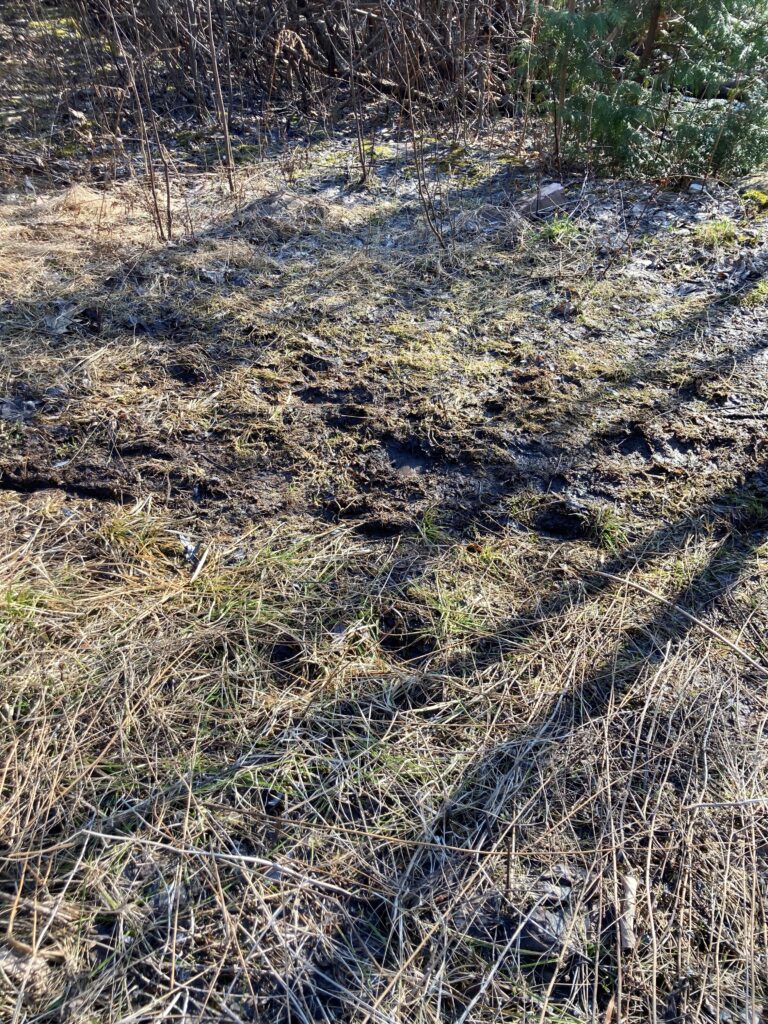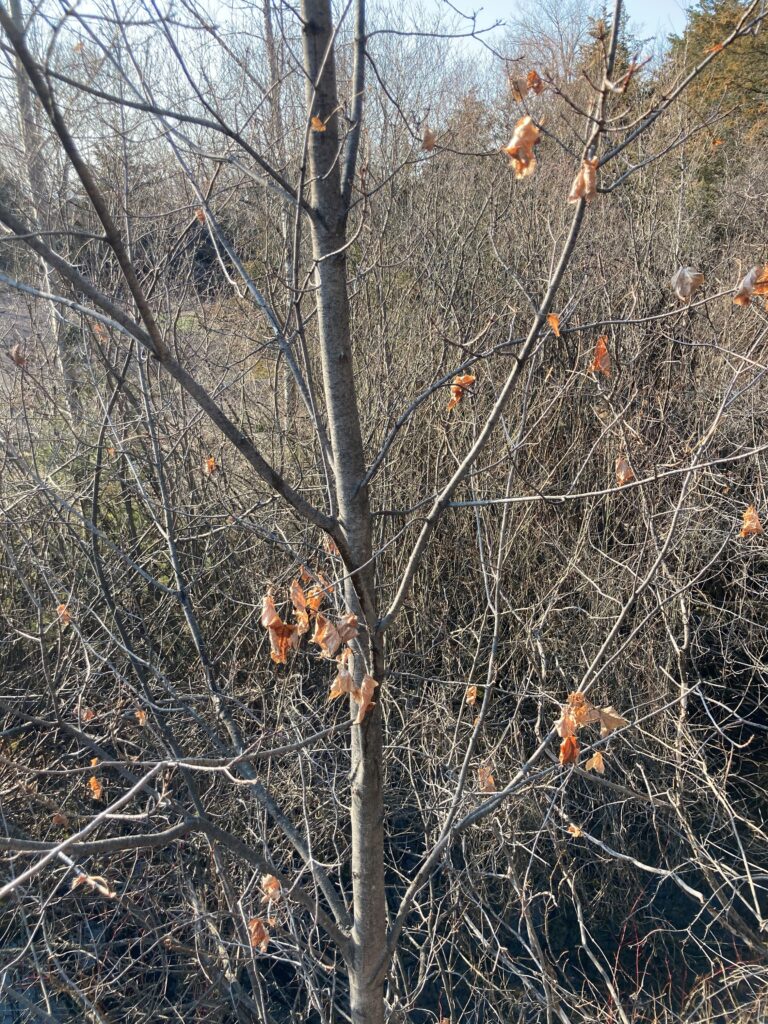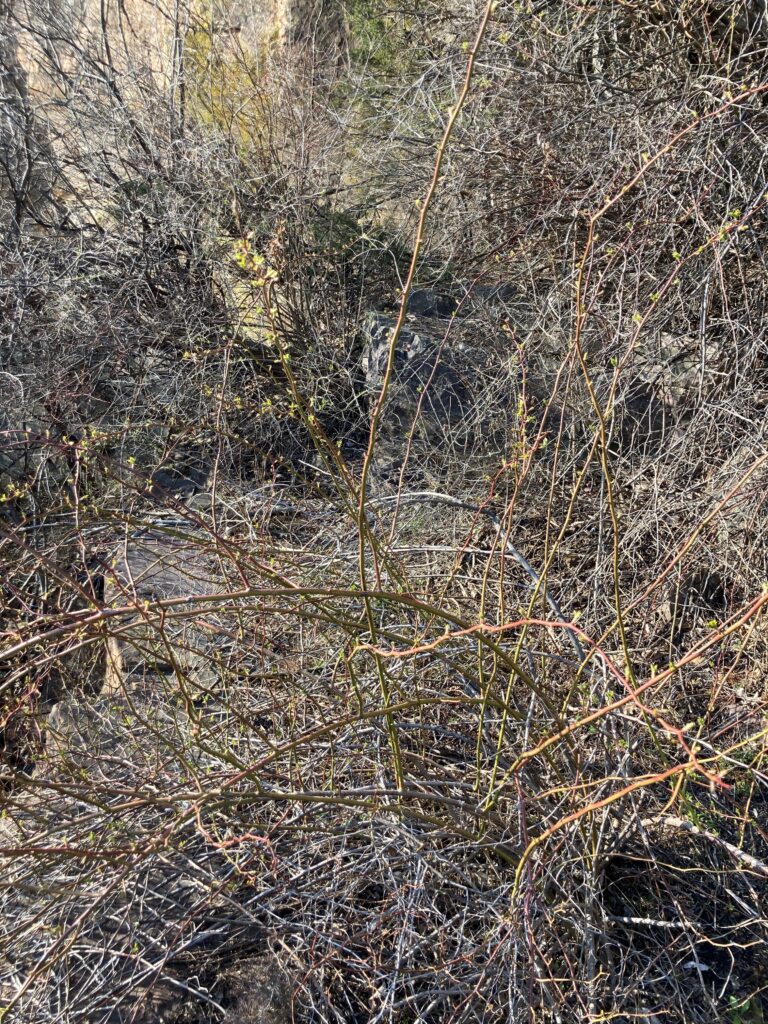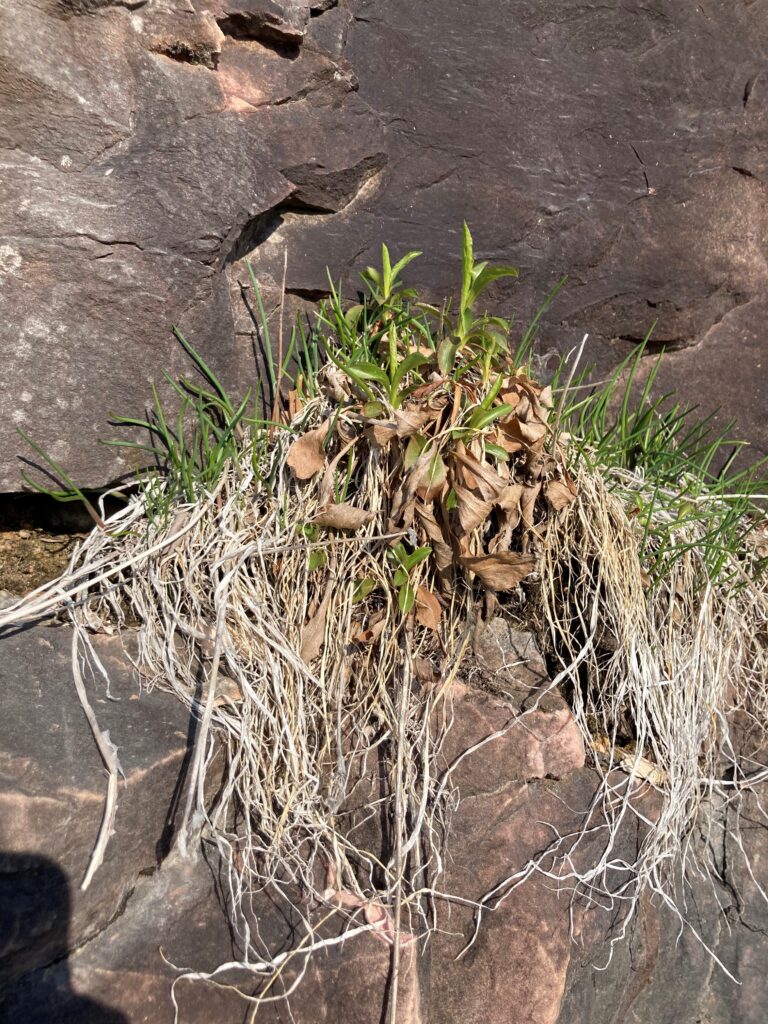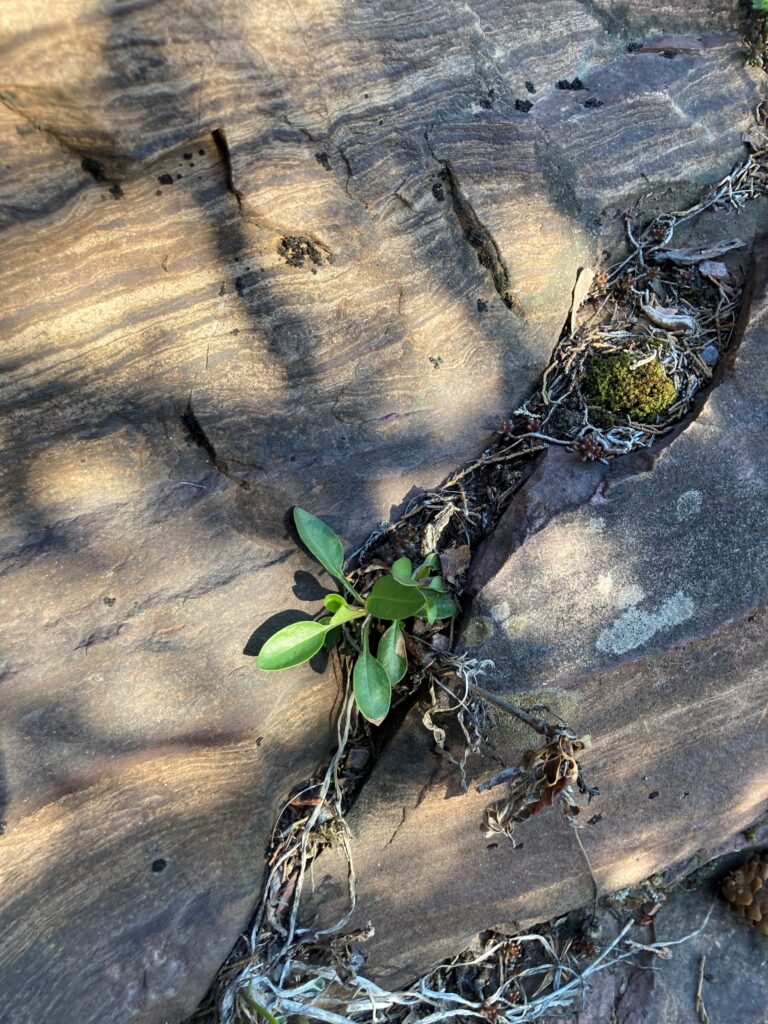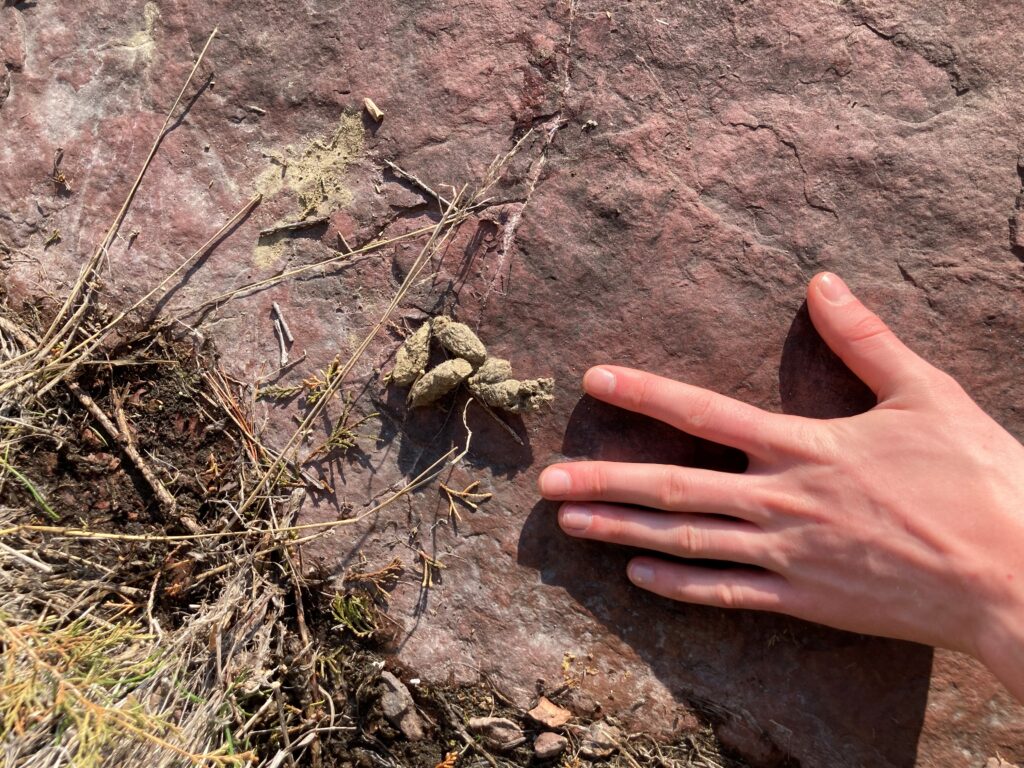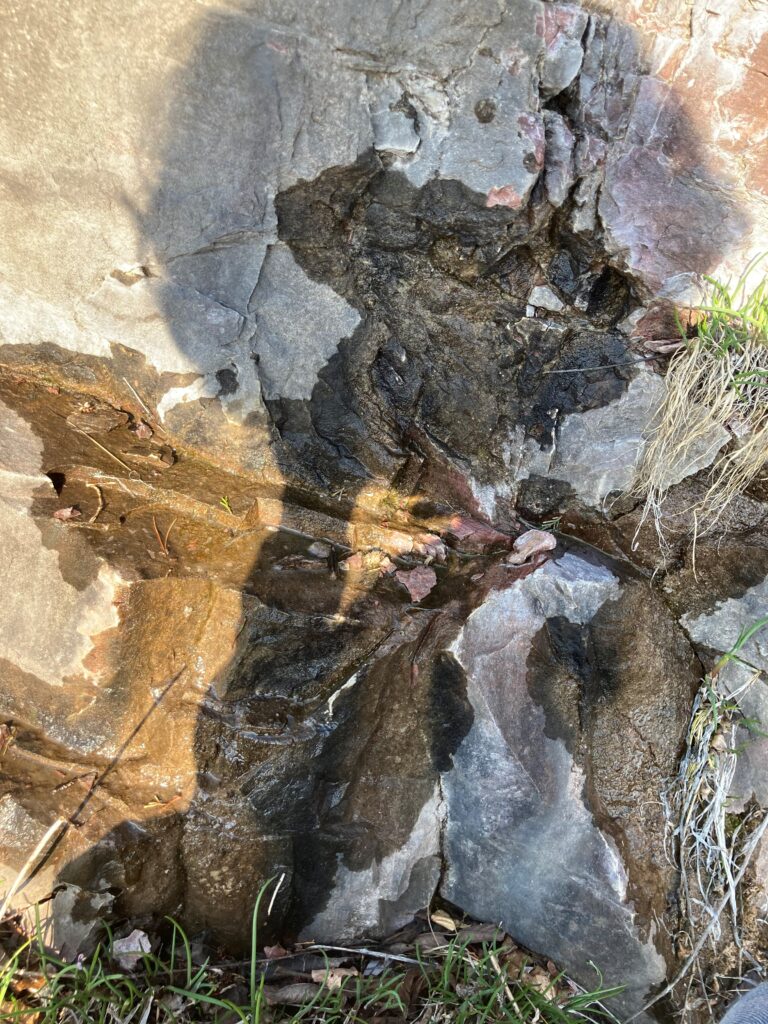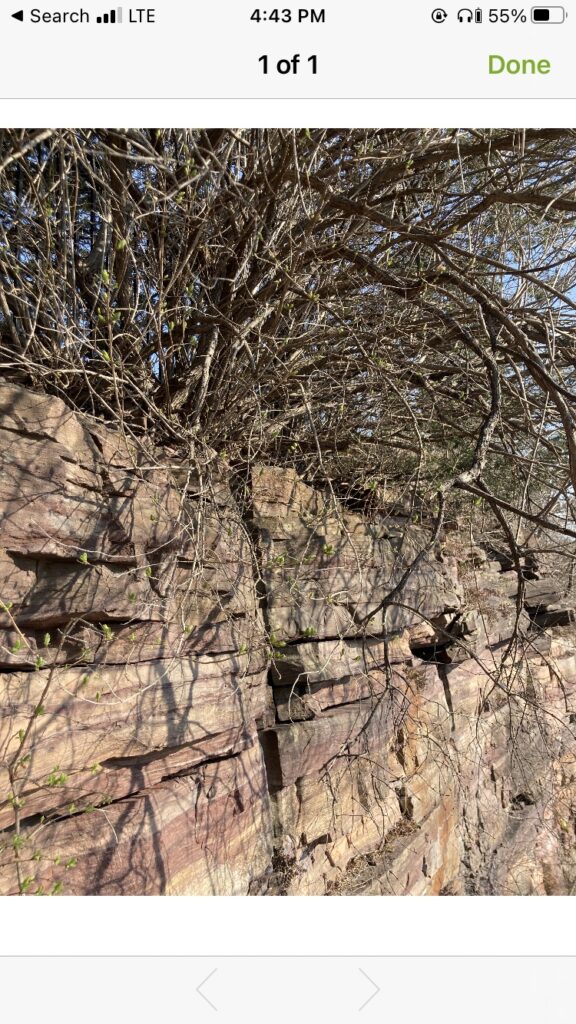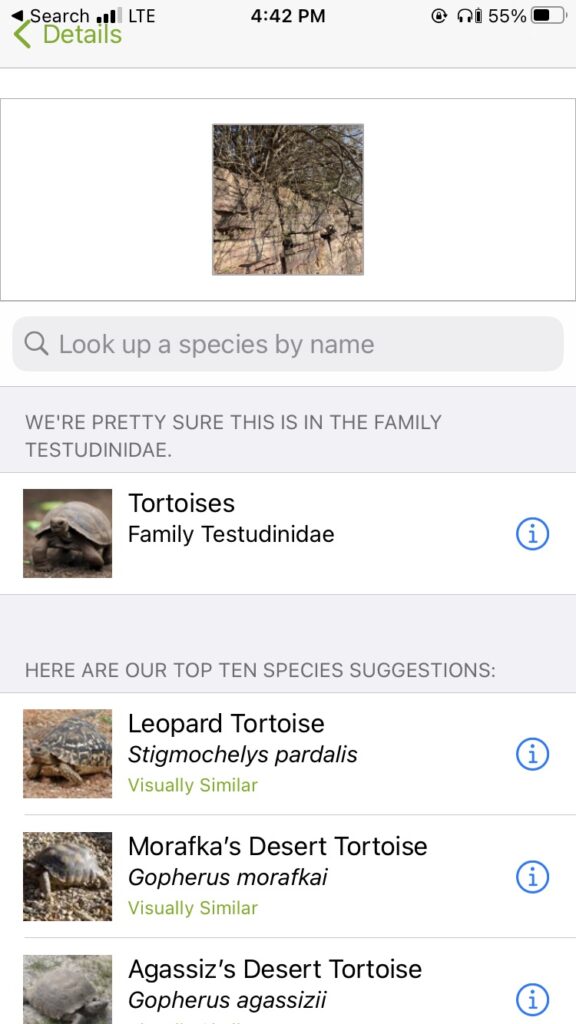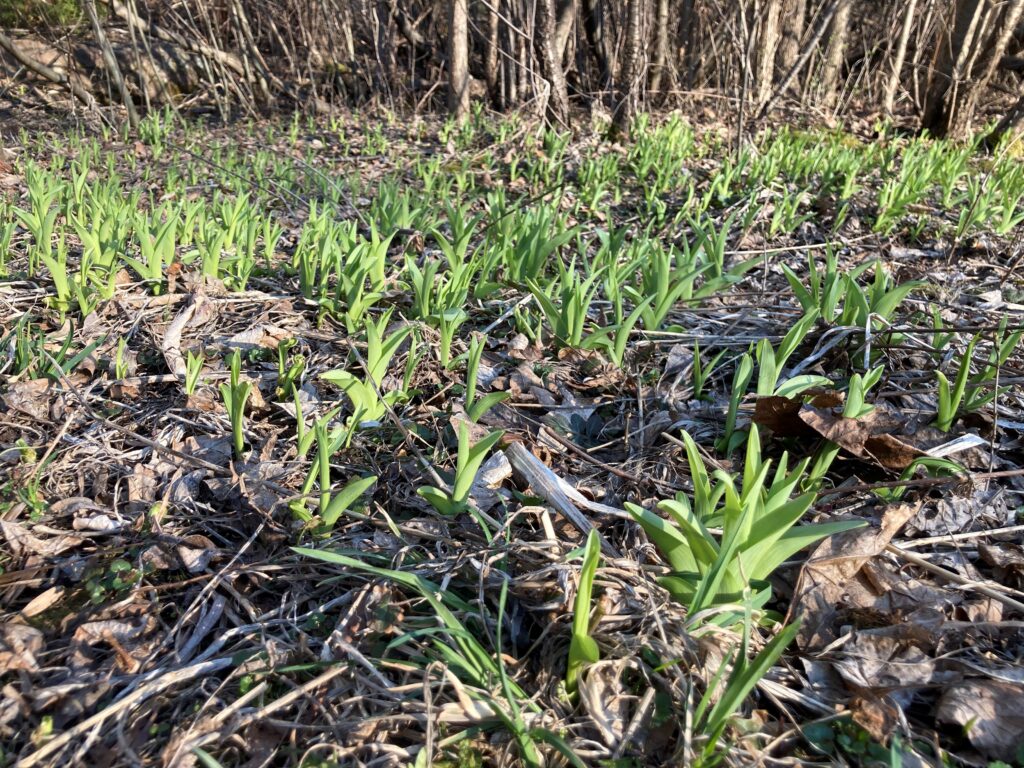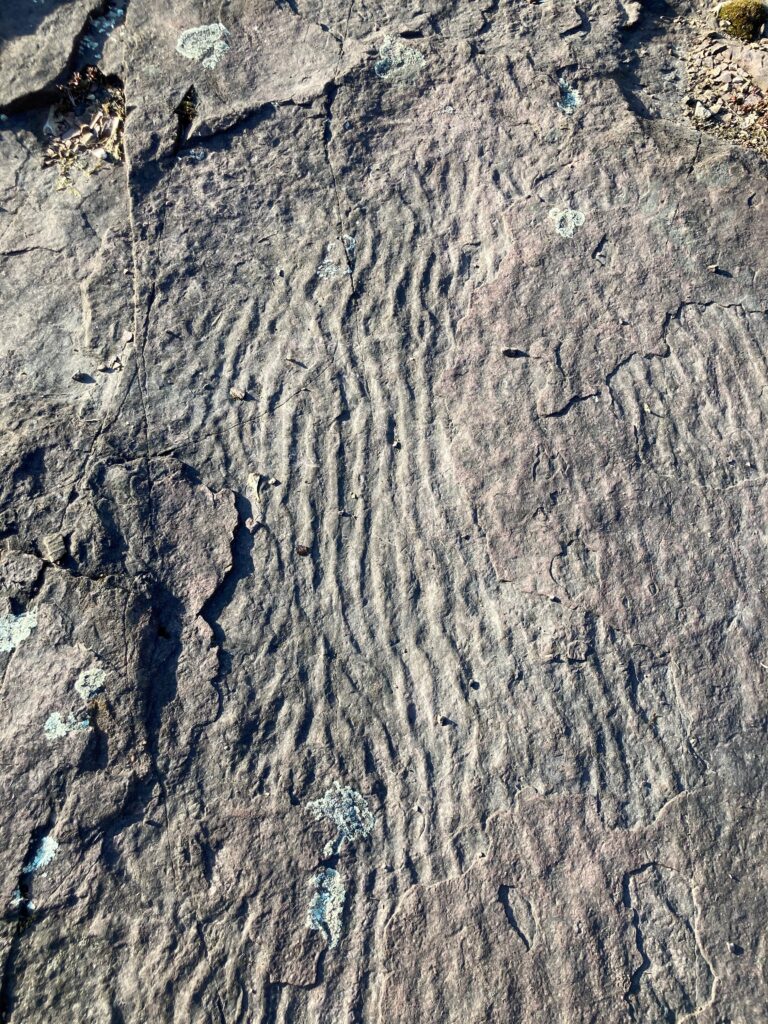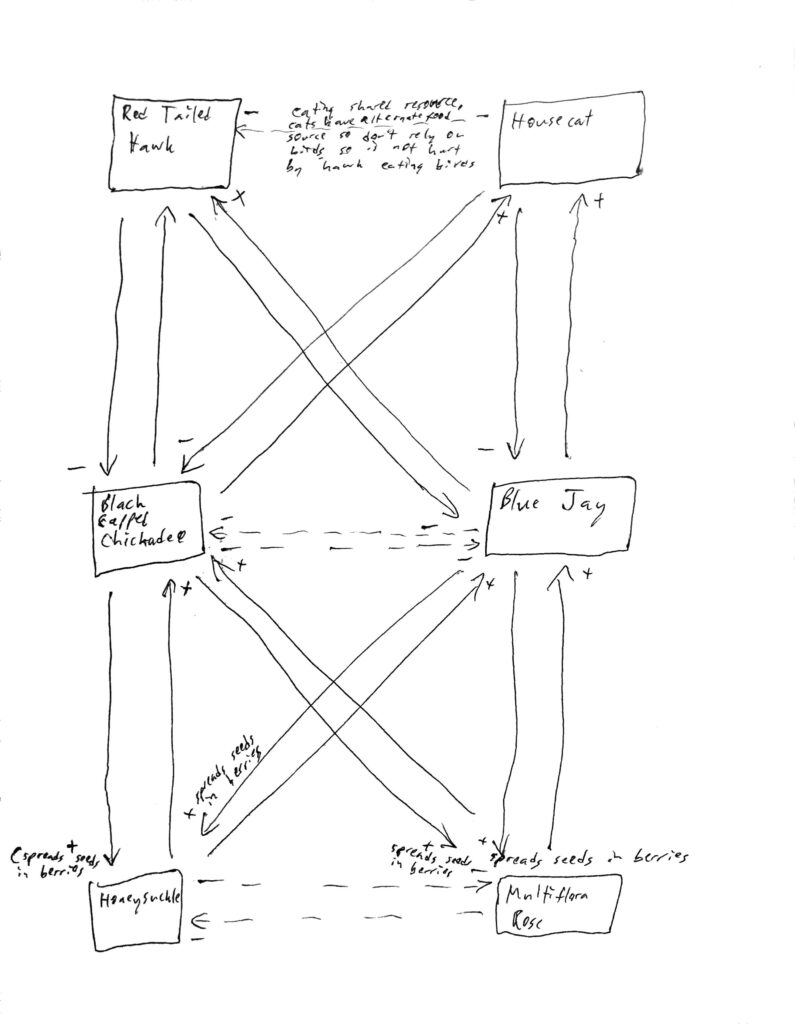I paid a visit to the quarry last Sunday to make note of the changes that had occurred in the two months since I had been there. It was a sunny day, with the temperature hovering in the low 50s, and I enjoyed my time wandering the site. The snow that had covered it in February had been replaced by mud in heavily trafficked areas, evidence of the important role access to the quarry plays in the lives of those who live nearby. Most trees were still bare, though one maple retained a number of dead leaves.
Mud Maple with dead leaves
Signs of life were visible in smaller plants. Of the woody shrubs, honeysuckle had the most developed leaves, but multiflora rose had also begun leafing out.
Honeysuckle Multiflora Rose
I climbed the cliff, where the chives were fairly large, and another unidentified herbaceous plant poked its leaves out of cracks in the rock. I suspect the surprising number of plants that call the cliff home is both a result of the alkilinity of the rock and the absence of human disturbance compared to the well-traveled lower areas.
Cliff chives Another plant on the cliff
I found a small pile of scat, which resembles that of a porcupine. I didn’t have a stick to pry it apart so I didn’t get a sense of its internal composition. I also observed multiple wet spots on the cliff, where water appeared to be coming out of the rock (perhaps a small aquifer within the cliff). These spots often featured plants, which could be a source of the water (water retention in their root systems) or a result of the availability of water.
Scat (with hand for scale) Water on the cliff
iNaturalist was unable to identify this honeysuckle
Back on ground level, the irises had sprouted and were bright green. I noticed a ripple pattern in the rock that I hadn’t seen before – perhaps evidence of Glacial Lake Vermont or the Iapetus Ocean.
Irises Rippled rock
I heard more birdsong than I had heard in February – perhaps migratory birds have returned to the site. Though I didn’t observe hawks or housecats today, I have seen them in the past, so they are included in the species interaction chart below.
Species interaction diagram (click for larger image)
Panorama from the cliff (click for larger image)
